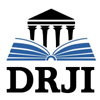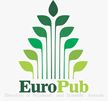EFFECTIVENESS OF THE ONLINE LEARNING PROCESS ON MACHINING ENGINEERING LEARNING IN SMK NEGERI 2 TASIKMALAYA CITY
Abstract
ABSTRACT
The world is currently experiencing the Covid-19 pandemic including Indonesia. The Covid19 pandemic has had an impact on the education sector, resulting in the change of the learning system that is usually face-to-face now to remote through online learning systems. So based on these circumstances, information is needed about the effectiveness of the online learning process during the Covid19 pandemic. This research aims to find out the effectiveness of aspects of the online learning process, namely learning planning, learning activities, learning strategies, media and learning technology, and assistance services by adjusting the achievement to online learning standards based on the experience of students doing online learning during the Covid-19 pandemic. The research methods used are descriptive methods and the data is obtained by survey. The subject of this study was a student of class X machining SMK Negeri 2 Tasikmalaya Year of Study 2020/2021 who experienced online learning during the Covid-19 pandemic. This study sample was as many as 100 students of class X Machining. The instrument used is an online learning process quality standard instrument derived from the SPADA Online Learning Process Guide 2019 by Kemenristekdikti. The result of this research is, the online learning process is quite effective, including media and learning technology, learning activities, learning strategy aspects, and aspects of learning planning are in the category of quite effective, while the aspect of learning assistance services is in the ineffective category.Keywords
Full Text:
PDFReferences
Bezovski, Z., & Poorani, S. (2016). The evolution of e-learning and new trends. In Information and Knowledge Management, 6(3), 50-57.
Castro, M. D. B., & Tumibay, G. M. (2021). A literature review: efficacy of online learning courses for higher education institution using meta-analysis. Education and Information Technologies, 26(2), 1367-1385.
Hang, L. T., & Van, V. H. (2020). Building strong teaching and learning strategies through teaching innovations and learners' creativity: A study of Vietnam Universities. International Journal of Education and Practice, 8(3), 498-510.
Hidayati, N., & Wuryandari, A. I. (2012). Media design for learning Indonesian in junior high school level. Procedia-Social and Behavioral Sciences, 67, 490-499.
Hikmatiar, H., Sulisworo, D., & Wahyuni, M. E. (2020). Utilization of google classroom- based learning management system in learning. Jurnal Pendidikan Fisika, 8(1), 78-86.
Iftakhar, S. (2016). Google classroom: what works and how. Journal of Education and Social Sciences, 3(1), 12-18.
Mauliana, M. I., Shifiyah, N., Rahmawati, Y., & Nisa, K. (2022). Practicum e-module development to improve distance learning efficiency in basic physics courses in the pandemic period. Acitya: Journal of Teaching and Education, 4(1), 189-206.
McAndrew, P., Farrow, R., & Cooper, M. (2012). Adapting online learning resources for all: planning for professionalism in accessibility. Research in Learning Technology, 20(4), 345-361.
Nguyen, H. T. T. (2021). Boosting motivation to help students to overcome online learning barriers in covid-19 pandemic: A case study. International Journal of Interactive Mobile Technologies, 15(10), 4-20.
Nugroho, A. G. (2017). Eksperimentasi Penggunaan media Komputer Dalam Pembelajaran Matematika Pada Pokok Bahasan Logaritma DiTInjau Dari Motivasi Belajar Siswa Kelas X SMA Kota Surakarta. Jurnal Pendidikan Matematika, 1(1), 1-19.
Phillips, J. M. (2005). Strategies for active learning in online continuing education. The Journal of Continuing Education in Nursing, 36(2), 77–83.
Prawoto, N., Priyo Purnomo, E., & Az Zahra, A. (2020). The impacts of covid-19 pandemic on socio-economic mobility in Indonesia. International Journal of Economics and Business Administration, 8(3), 57-71.
Reid, A., & Solomonides, I. (2007). Design students' experience of engagement and creativity. Art, Design & Communication in Higher Education, 6(1), 27-39.
Riyanto, A., & Yunani, E. (2020). The effectiveness of video as a tutorial learning media in muhadhoroh subject. Akademika: Jurnal Teknologi Pendidikan, 9(2), 73-80.
Rosali, E. S. (2020). Aktifitas pembelajaran daring pada masa pandemi covid-19 di Jurusan Pendidikan Geografi Universitas Siliwangi Tasikmalaya. Geosee, 1(1), 21-30.
Rusdiana, A., Suryana, Y., Hidayat, A., & Mu'in, A. (2020). POE2WE learning management based on google classroom blended learning (alternative models in learning during WFH pandemic covid-19). International Journal of Psychosocial Rehabilitation, 24(8), 4994-5005.
Sudaryanto, D. H. (2016). Pemanfaatan e-learning sebagai media pembelajaran mandiri. Swara Patra: Majalah Ilmiah PPSDM Migas, 6(4), 28-34.
Syahdan, S., Herlinawati, H., & Marwa, M. (2021). Learning media and strategies used by english students in practice teaching during the pandemic. ETERNAL (English Teaching Journal), 12(2), 107-116.
Syaifudin, M. (2017). Improving students speaking skill by implementing blended learning (online learning and classroom). Jurnal Informa: Jurnal Penelitian dan Pengabdian Masyarakat, 3(2), 30-34.
Tohara, A. J. T. (2021). Exploring digital literacy strategies for students with special educational needs in the digital age. Turkish Journal of Computer and Mathematics Education (TURCOMAT), 12(9), 3345-3358.
DOI: https://doi.org/10.17509/jmee.v10i1.58225
Refbacks
- There are currently no refbacks.
Copyright (c) 2023 UNIVERSITAS PENDIDIKAN INDONESIA

This work is licensed under a Creative Commons Attribution-ShareAlike 4.0 International License.
Indexed by:
ISSN: P 2356-4997
View My Stats
 Journal of Mechanical Engineering Education (Jurnal Pendidikan Teknik Mesin)
Journal of Mechanical Engineering Education (Jurnal Pendidikan Teknik Mesin)








